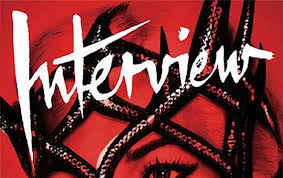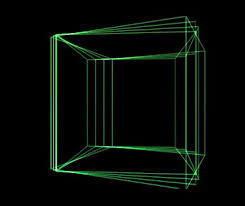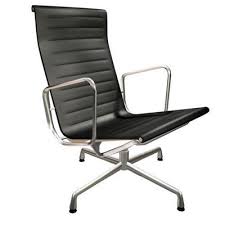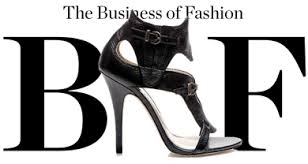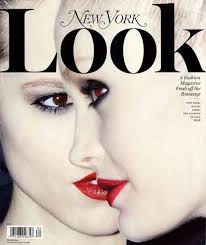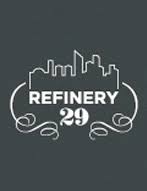--Thom Mayne

The Civic Value of a Bold Statement
by Nicolai Ouroussoff
[nytimes.com - Jne.09]
We’ll have to wait to find out exactly what the end of the Age of Excess means for architecture in New York. Yes, the glut of high-concept luxury towers was wearisome. But some great civic works were also commissioned in that era. And given the hard economic times, they may be the last we see for quite some time.
The new academic building at the Cooper Union for the Advancement of Science and Art is yet more proof that some great art was produced in those self-indulgent times. Designed by Thom Mayne of the Los Angeles firm Morphosis, it is not a perfect building, but it is the kind of serious work that we don’t see enough of in New York: a bold architectural statement of genuine civic value. Its lively public spaces reaffirm that enlightenment comes from the free exchange of ideas, not just inward contemplation.
Perhaps more important, the building seems to strike just the right tone for this time in New York’s history. A wholly contemporary work, it has a bold, aggressive profile that says as much about the city we’ve lost as it does about the future we are building. It proves that a brash, rebellious attitude can be a legitimate form of civic pride.
The building occupies a contentious site at Cooper Square, between Sixth and Seventh Streets, in the East Village. The area has experienced a particularly painful process of gentrification in the past decade. First, generic glass boxes began popping up along the Bowery. Then CBGB closed. For me the final straw was the opening in 2005 of Gwathmey Siegel’s undulating glass luxury apartment tower at Astor Place, a vulgar knockoff of Mies van der Rohe’s unbuilt Glass Skyscraper project and a symbol of the era’s me-first mentality.
Mr. Mayne’s building does not shy away from this debate by trying to fade into the background. Seen from the old Cooper Union Foundation building across the street, its big concave facade is enveloped in a glittering perforated metal screen, like armor, so that it’s hard at first to get a grip on the building’s scale. A big vertical slot is cut out of the facade’s center, as if it had been ripped open.
Yet the more you look at the building, the more it looks right at home in its surroundings. From certain angles the facade’s concave form seems to exert a magnetic pull, as if it were trying to embrace the neighborhood in front of it. The curve of the corner, which lifts up to invite people inside the lobby, has an unexpected softness. Even the bulky exterior mirrors the proportions of the Foundation building — a friendly nod to its older neighbor.
The effect is tough and sexy at the same time. One of the most overlooked strengths of Mr. Mayne’s designs is his feel for material. He is not a finicky designer; you don’t look to his work for refined details. He tends instead to extract beauty from the crudest industrial materials: raw concrete, steel I-beams, metal screens. The connections between materials are always clearly expressed, never smoothed over, so that you can feel the memory of the workers’ hands. It is what makes his buildings — like the Diamond Ranch High School in Pomona, Calif. — so approachable.
This strategy is social as well as aesthetic. Here the big V-shaped columns that line the sidewalk not only support the building, but they also create small pockets of space where students can hang out along the street. Behind them the lobby is clad entirely in glass. Just inside, a narrow staircase runs along the base of the window down to a basement gallery and theater. Other views open down to the gallery from Seventh Street.
The idea is to create a series of interlocking social spaces, many undefined, and to allow for the kind of casual encounter that is a central part of urban life. And it reflects Mr. Mayne’s ambivalence over the Modernist obsession with transparency. To the Modernists transparency equaled truth. To Mr. Mayne’s generation, which formed its ideas in the 1960s, it could also mean uniformity. Like other radical architects of his age, he is more interested in the dark, hidden corners where people can loiter, get into mischief, escape from authority.
The social heart of the building is a vast internal staircase, which sweeps from the lobby all the way to the fourth floor. The staircase, 20 feet wide at its base, has a classical grandeur, as if the Met’s front stairs had been pulled inside the building. The stair narrows as it rises, creating a forced perspective that exaggerates its length. A big window frames the top, allowing light to spill down into the lobby and drawing you up into the space.
From the top people will filter around to each side and climb a smaller, asymmetrical spiral stair to the upper floors. When I first looked up through this space I immediately thought of the Baroque domes of Guarino Guarini, except that the complex order of Guarini’s domes represents divine order. In Mayne’s version that world has been set off balance, as if to allow for imperfections, and it is inhabited by students.
The building’s flaws, though, lie not in a failure of vision but in questions about its execution. The most serious of these have to do with circulation. I expect there will be complaints, for example, about the main elevators, which only go up to the fifth and eighth floors. The system is based on a design by Le Corbusier, who used it in his 1952 Unité d’Habitation housing block in Marseilles. Since it eliminated the need for corridors on every other floor, he could create big, floor-through duplex apartments with windows on both sides. But here it doesn’t make much sense, because the building is made up of standard, single-story offices and classrooms. Most students will have to walk an extra flight up or down to get to their classes.
Another subtle but important problem is the depth of the treads on the grand staircase. The stairs in front of the Metropolitan Museum of Art are 14 inches deep, which is what makes them such a nice place to sit, rest, chat with a stranger. Mr. Mayne’s stairs are a standard 11 inches, like a conventional fire stairwell. They are hard to sit on, and they gave me vertigo when I began my descent from the third floor. Does this sound picky? Not in a design that is all about the informal use of public space. It is the difference between a very good building and a great one.
Still, Mr. Mayne has created a serious work of architecture. And when we look back on this era, the new academic building will stand out with a handful of other designs — the New Museum, perhaps, and the renovation of Alice Tully Hall — as projects that we, as a city, can feel proud of. They leave you with the comforting thought that even in egotistical times, a spirit of generosity can assert itself.
 Cooper Union - slideshow
Cooper Union - slideshow


 COMMENTS
COMMENTSAll it's missing is some stormtroopers and Darth Vader
That grand stair is sure to induce some vertigo! There better be a railing in the middle of the stair.
It's stunning. I took a construction tour a few months ago and it's like they let a bunch of mad geniuses loose and told them they could build whatever they wanted. NYU, SVA, New School, etc. ought to be embarrassed of themselves after seeing this building. Cooper Union is a tuition-free school and relied heavily on donations to make this LEED-certified building happen. The other private institutions in NYC charge a small fortune for tuition, yet litter our city with ugly buildings that don't even pretend to be environmentally friendly. That monstrosity of an SVA dorm on Delancey and Ludlow is a prime example, or anything NYU has built in the past 20 years. The standards for educational institutional architecture just went up a million percent.
The building looks lika car wreck to me. It certainly shakes things up, just like being in a head on collision would.
I think its nickname will be The Crack.
____________________________________________
 The Cooper Union for the Advancement of Science and Art (commonly referred to simply as The Cooper Union or Cooper Union) is a privately-funded college in Downtown Manhattan, New York City. Cooper Union, founded in 1859, established a radical new model of American higher education. Its mission reflected Peter Cooper's fundamental belief that education of the highest quality should be as "free as air and water" and should be available to all who qualify, independent of race, religion, gender or social status. For 150 years, the College has admitted students based on merit alone and provided each with a full-tuition scholarship.
The Cooper Union for the Advancement of Science and Art (commonly referred to simply as The Cooper Union or Cooper Union) is a privately-funded college in Downtown Manhattan, New York City. Cooper Union, founded in 1859, established a radical new model of American higher education. Its mission reflected Peter Cooper's fundamental belief that education of the highest quality should be as "free as air and water" and should be available to all who qualify, independent of race, religion, gender or social status. For 150 years, the College has admitted students based on merit alone and provided each with a full-tuition scholarship.The school offers accredited degree programs in architecture, fine arts, and engineering...Cooper is considered to be one of the most prestigious schools in the nation, with all of its member schools ranked among the highest in the country.
The Cooper Union is one of the few American institutions of higher learning to offer a full-tuition scholarship (valued at $130,000 as of 2008) to every admitted student. As a result, The Cooper Union is one of the most selective colleges in the United States, with an acceptance rate generally below 10% (although both the art and architecture schools have acceptance rates lower than 5%).
Financial Support
A substantial portion of the annual budget, which supports the full-tuition scholarships in addition to the school's costs, is generated through donations from alumni in both the public and the private sector. In addition to this, real estate has become a very important asset to the College and has drastically increased its endowment to over $600 million. [...]
Founding and Early History
The Cooper Union was founded in 1859 by American industrialist Peter Cooper, who was a prolific inventor, a successful entrepreneur, and one of America's richest businessmen. Peter Cooper was a workingman's son who had less than a year of formal schooling. Yet he went on to become an industrialist and an inventor; it was Peter Cooper who designed and built America's first steam railroad engine. Cooper made his fortune with a glue factory and an iron foundry. Later, he turned his entrepreneurial skills to successful ventures in real estate, insurance, railroads and telegraphy. He even once ran for President.
In the late 1850s, when Cooper was a principal investor and first president of the New York, Newfoundland & London Telegraph Co., the firm undertook one of the 19th century's monumental technical enterprises—laying the first Atlantic cable. Cooper also invented instant gelatin, with help from his wife, Sarah, who added fruit to what the world would come to know as Jell-O.
Originally intended to be called simply "the Union," the Cooper Union began with adult education in night classes on the subjects of applied sciences and architectural drawing, as well as day classes for women on the subjects of photography, telegraphy, typewriting and shorthand (in what was called the College's Female School of Design). Discrimination based on race, religion, or sex was expressly prohibited.
Those free classes—a landmark in American history and the prototype for what is now called continuing education—have evolved into three distinguished schools that make up The Cooper Union for the Advancement of Science and Art: the School of Art, the Irwin S. Chanin School of Architecture and the Albert Nerken School of Engineering.
Peter Cooper's dream was to give talented young people the one privilege he lacked—a good education. He also wanted to make possible the development of talent that otherwise would have gone undiscovered. His dream—providing an education "equal to the best"—has come true. Since 1859, the Cooper Union has educated thousands of artists, architects and engineers, many of them leaders in their fields. [...]
Notable Alumni
With fewer than 1,000 students, Alumni of the Cooper Union win a vastly disproportionate share of the nation's most prestigious awards. Recent awards include 1 Nobel Prize, 10 Rome Prizes, 18 Guggenheim fellowships, 3 MacArthur fellowships, 9 Chrysler Design awards, and 3 American Institute of Architects Thomas Jefferson Awards for Public Architecture. The school also boasts more than 23 Fulbright scholars since 2001, and 10 National Science Foundation Graduate Research Fellowships since 2004.
Notable alumni of the Cooper Union include:
Thomas Edison - inventor
Jeffrey Epstein - billionaire investor (and convicted teen solicitor)
Milton Glaser - New York Magazine founder and I Love New York logo creator
Russell Hulse - Nobel Prize winner for Physics (1993)
Bob Kane - comic book artist and writer; creator of Batman
Daniel Libeskind - architect for the reconstruction of the World Trade Center



